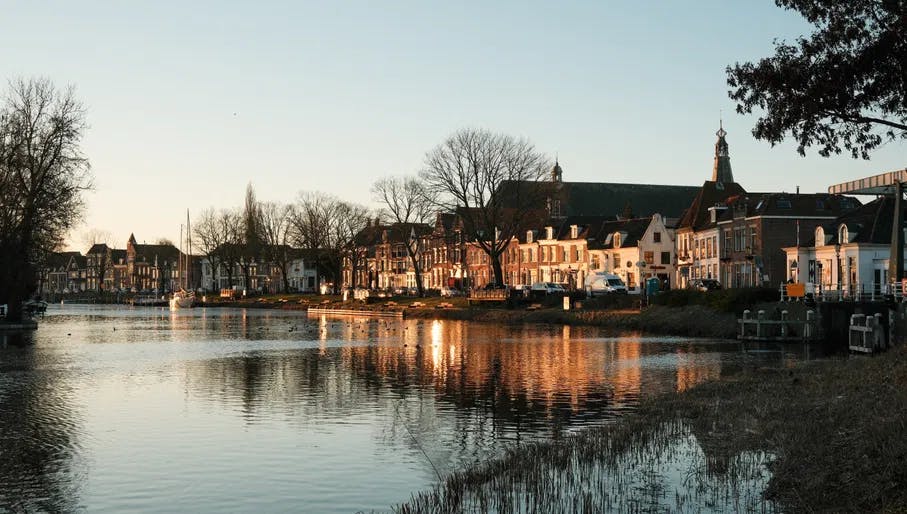
Art and culture in Weesp
29 July 2024


Before Weesp became an epicentre for trade, it was little more than a humble peat bog: uninhabitable swampy lands south of medieval Amsterdam. However, after its founding in the 14th century, Weesp quickly developed to play a prominent role in the area’s trade network. Nestled along the rolling green banks of the Vecht river, the town thrived as a trading station. Lovingly dubbed the ‘Pearl on the Vecht’ for its picture-perfect image as well as its role in the distillation of jenever and the brewing of local beer, Weesp supplied the Dutch East India Company with barrels of Wispe beer that were shipped far and wide across the world. It wasn’t long before the town gained a reputation as a centre for jenever - a tradition that is still present today.
Beyond the entrepreneurial character of its inhabitants, Weesp played a vital role as a protective fortress. Part of the clever defence system known as the Hollandse Waterlinies – a network exemplary of the water mastery for which the Dutch are known – Weesp partly facilitated strategic flooding of areas of the countryside to block potential threats of invasion. From the imposing Uitermeer fortress to the Ossenmarkt bastion, the town's fortifications serve as stoic reminders of the period when Weesp kept enemies away from Amsterdam's doorstep.

Though officially a part of Amsterdam’s municipality since 2022, Weesp remains a world apart. With its cobbled alleys and drawbridges, the tranquillity of its green landscape, and the laidback way of life of its inhabitants, a trip to Weesp offers a step back in time while staying right in Amsterdam’s backyard. While it once protected against invading armies, Weesp fortress walls now house plenty of cultural attractions and cafes run by friendly locals.
Though Weesp remains a historical treasure, it has seen waves of modern development and change. Encapsulating the Dutch love for repurposing is the Wispe Brouwerij, a contemporary brewery housed in a former church, which breathes new life into Weesp's age-old brewing traditions. Another example of the town’s modern regeneration is the new Weespersluis residential neighbourhood, a development which expands the area and incorporates green spaces and canals. With its creation of parks, playgrounds and as well as a local community school, the face of Weesp has continued to grow and change over time.